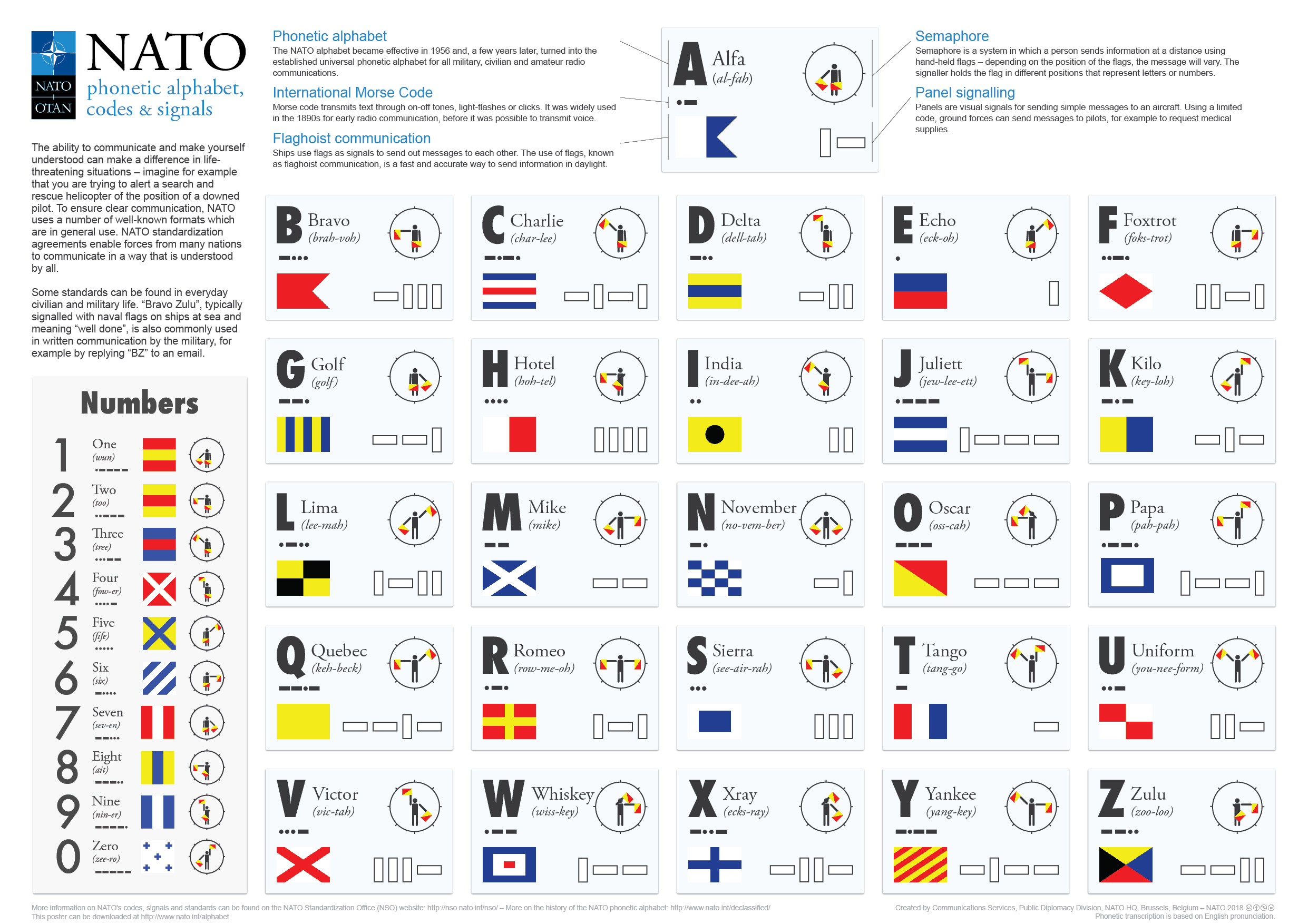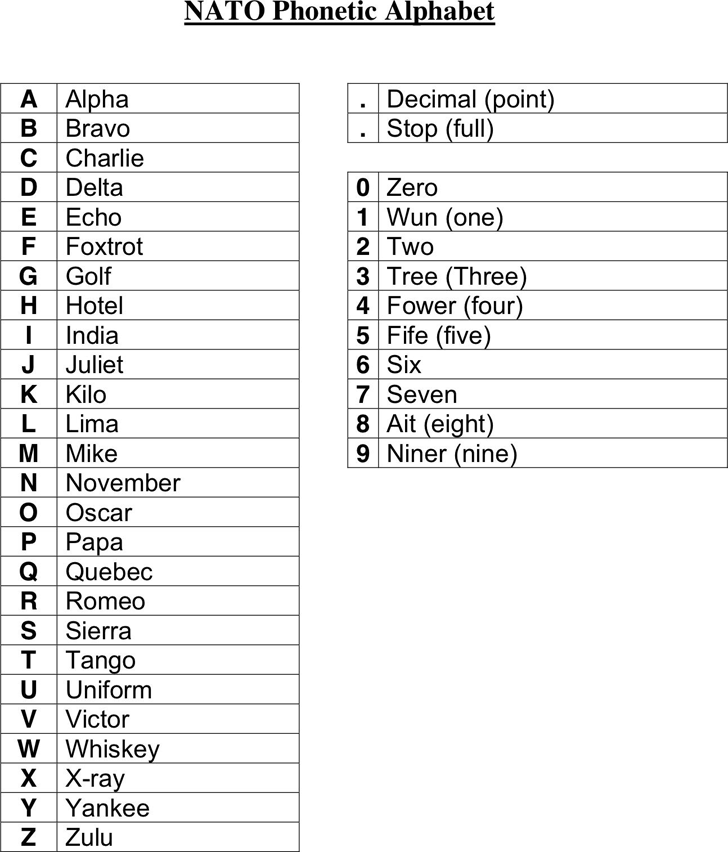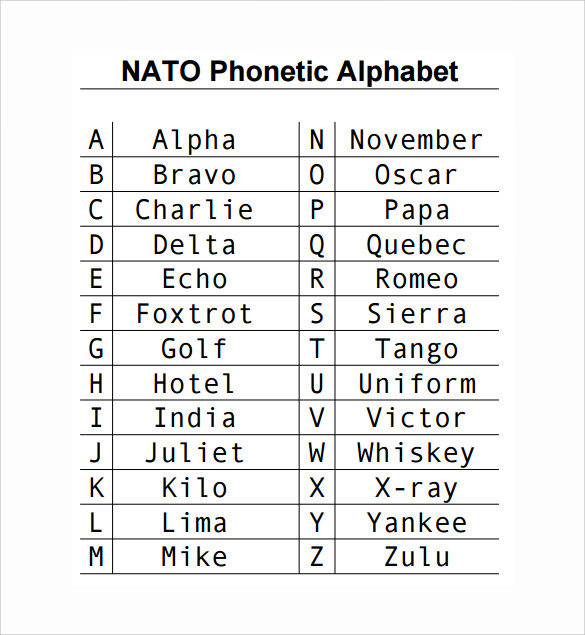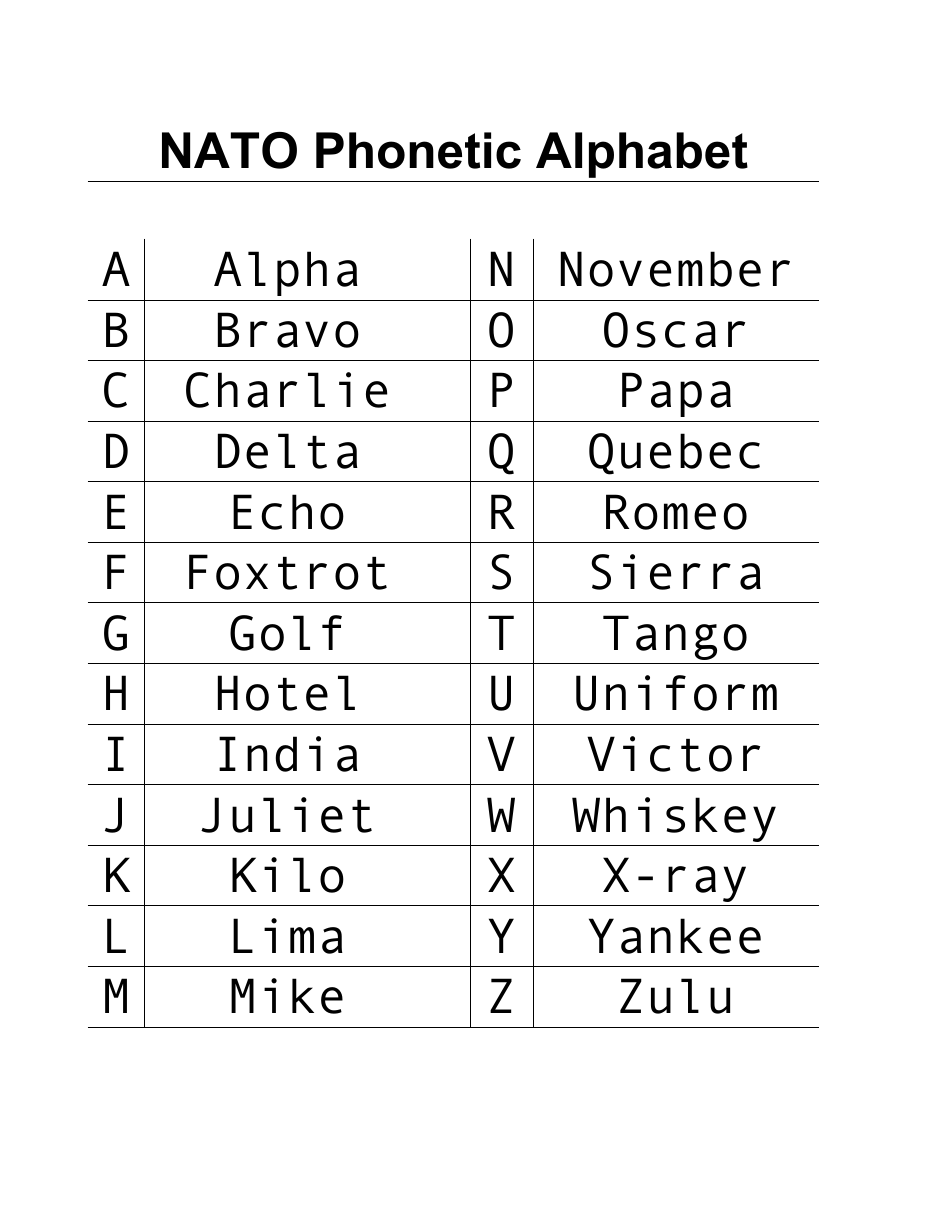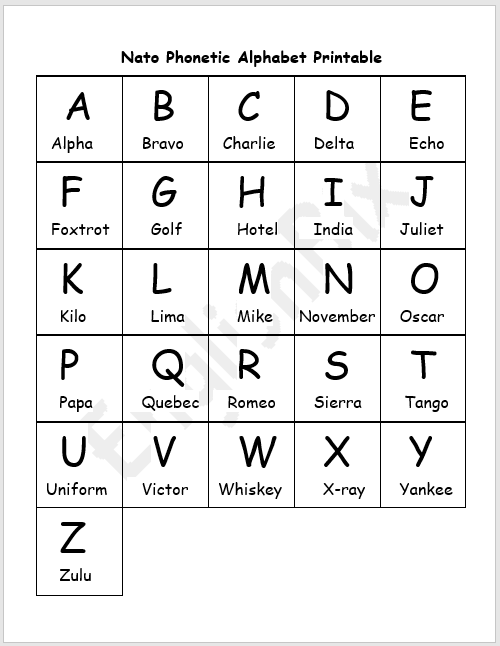The NATO phonetic alphabet is a fundamental tool in the field of communication, especially in situations where clear and precise verbal communication is crucial. This alphabet is used to ensure accurate pronunciation and understanding of letters and numbers, particularly in radio and telephone communications.
The NATO phonetic alphabet, also known as the International Radiotelephony Spelling Alphabet, is a set of standardized phonetic codes where each letter is represented by a specific word. The use of words instead of letters helps to eliminate confusion and ensure that messages are accurately transmitted and received.
For example, instead of saying “A,” which can be easily misheard as other similar-sounding letters such as “K” or “J,” the NATO phonetic alphabet uses the word “Alpha.” Similarly, “B” is represented as “Bravo,” “C” as “Charlie,” and so on. This eliminates any potential confusion and ensures that the intended message is clearly understood.
The use of the NATO phonetic alphabet is not limited to military and aviation applications. It is also widely used in various industries, including telecommunications, emergency services, logistics, and even amateur radio operators. By adopting this standardized alphabet, professionals in these fields can communicate more efficiently and accurately.
Mastering the NATO phonetic alphabet is not only essential for professionals who rely on effective communication but also beneficial for individuals in their daily lives. By using the NATO phonetic alphabet, you can ensure clarity and precision when giving out important information over a phone call or radio transmission. This can be particularly helpful in emergency situations where time is of the essence.
Fortunately, resources are available to help you learn and memorize the NATO phonetic alphabet. You can find printable charts, like the one shown above, that provide a visual reference for each letter and its corresponding word. These charts are easy to use and can be printed and kept handy for quick reference until you have memorized the alphabet.
In addition to the printed charts, many online resources and mobile applications are available to assist in learning and practicing the NATO phonetic alphabet. Some of these resources provide interactive exercises and games, making the learning process more engaging and enjoyable.
By investing time and effort into learning the NATO phonetic alphabet, you can enhance your communication skills and ensure that your messages are received accurately. This can be particularly important in professional settings where clear and concise communication is vital for successful outcomes.
Whether you work in the military, aviation, emergency services, or any other field that requires reliable communication, familiarizing yourself with the NATO phonetic alphabet is highly recommended. It is a small but powerful tool that can greatly improve the accuracy and efficiency of your communications.
So why not take the time to learn the NATO phonetic alphabet? It is a skill that can benefit you both personally and professionally. The ability to communicate clearly and precisely is invaluable, and the NATO phonetic alphabet provides a systematic and reliable way to achieve this.
Remember, effective communication is essential in any field, and the NATO phonetic alphabet can provide you with the tools to achieve it. Start practicing today and experience the difference it can make in your professional and personal interactions!
